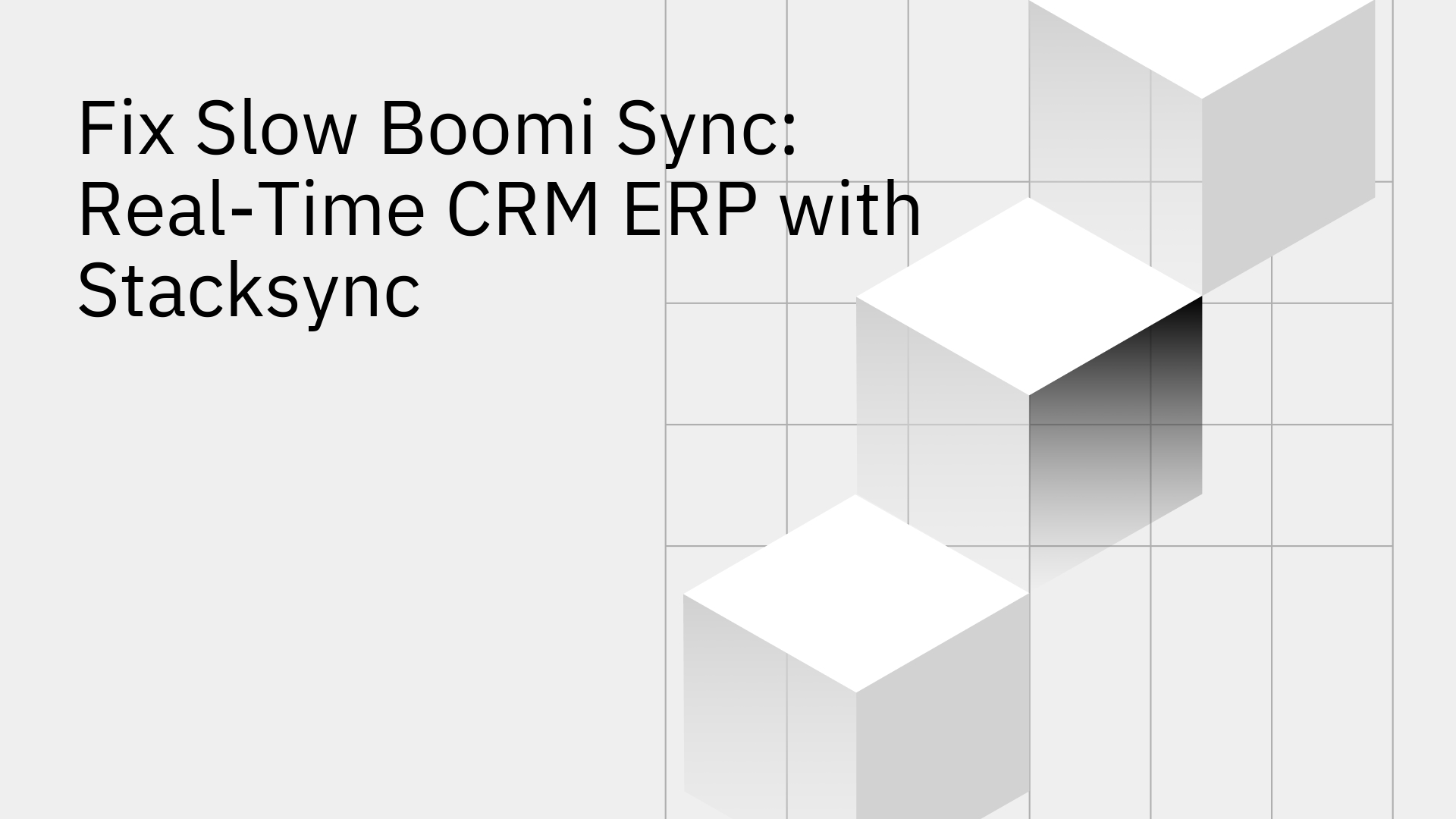
In today's fast-paced business world, waiting for data is not an option. Yet, many companies find themselves stuck with a slow Boomi sync between CRM and ERP systems.
This delay isn't just a technical glitch; it creates real-world problems like processing orders with outdated information, giving customers wrong answers, and making business decisions based on old data.
These issues are often built into the design of traditional integration platforms like Boomi, which typically move data in scheduled batches rather than in real time.
Fortunately, there's a modern solution designed to fix this. Stacksync was built from the ground up to provide the instant, two-way data synchronization that businesses need to operate efficiently and stay ahead of the competition.
When your CRM and ERP don't talk to each other instantly, it's more than an IT headache—it's a direct hit to your bottom line. These "hidden costs" of poor integration quickly add up as teams create manual workarounds and leadership relies on information that is no longer accurate [5].
Slow data syncs create problems for every department:
While Boomi is a powerful tool for many integration tasks, its architecture has fundamental limitations when it comes to real-time operational needs. Getting it to work faster often requires complex and continuous performance tuning, which demands deep expertise and significant resources [2].
At its core, Boomi is often set up to work like a mail carrier who only comes once an hour. It uses batch processing, meaning it gathers data and moves it at scheduled times (e.g., every 15 minutes). This creates a guaranteed delay.
Managing Boomi’s infrastructure, with its Atoms and Molecules, can feel like running your own set of mini-servers just to keep your integrations online. This complexity often leads to performance issues caused by common development mistakes [4].
Getting data to flow in both directions with Boomi is notoriously difficult. It often feels like setting up two one-way streets and trying to manage the traffic yourself. This typically involves building two separate syncs and writing complicated rules to prevent data from getting stuck in an infinite loop.
Stacksync is the purpose-built solution to these challenges. It’s designed specifically for the one thing general-purpose platforms like Boomi struggle with: real-time, bi-directional data synchronization.
Stacksync is a modern alternative for businesses that can't afford to wait for their data. We offer a specialized platform for data sync, which is a different challenge than what traditional tools were built for, as our comparison of MuleSoft, Boomi, Workato vs. Stacksync explains.
Instead of checking for updates on a schedule, Stacksync gets an instant notification the moment your data changes, using modern tools like webhooks and Change Data Capture (CDC).
Stacksync was designed from day one to handle data flowing in both directions seamlessly and intelligently.
For a deeper dive into this technology, read our complete guide on what is two-way sync.
Stacksync gives you enterprise-level power without the complexity.
A slow CRM-ERP sync is a significant business liability that traditional integration platforms were not built to solve. To be competitive, deliver an exceptional customer experience, and run an efficient operation, your business needs instant data consistency across every system.
Stacksync provides the definitive solution to fix slow Boomi syncs with a platform that is fast, reliable, and truly bi-directional. Stop letting data delays hold your business back.
Ready to see how real-time sync can transform your operations?
Schedule a demo with one of our cloud architects today.
For a more detailed comparison of other integration tools, check out our enterprise integration platform technical analysis of Boomi vs. Celigo.